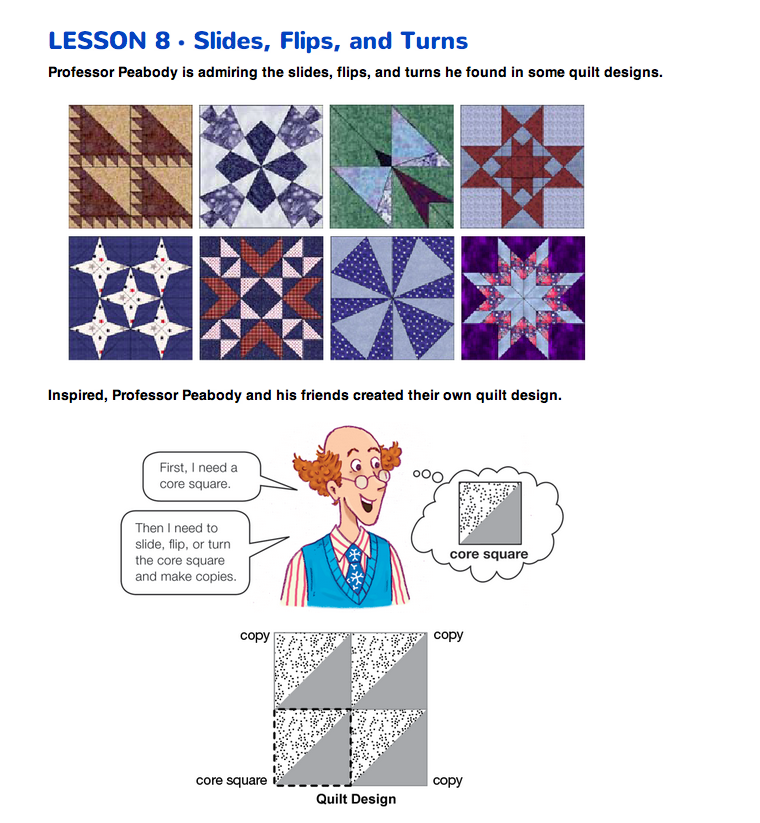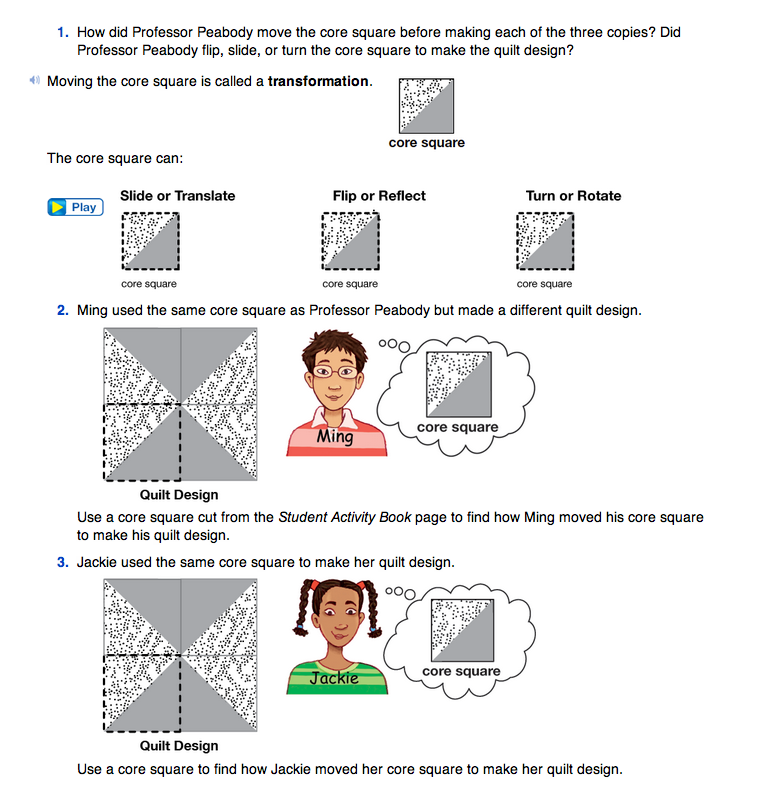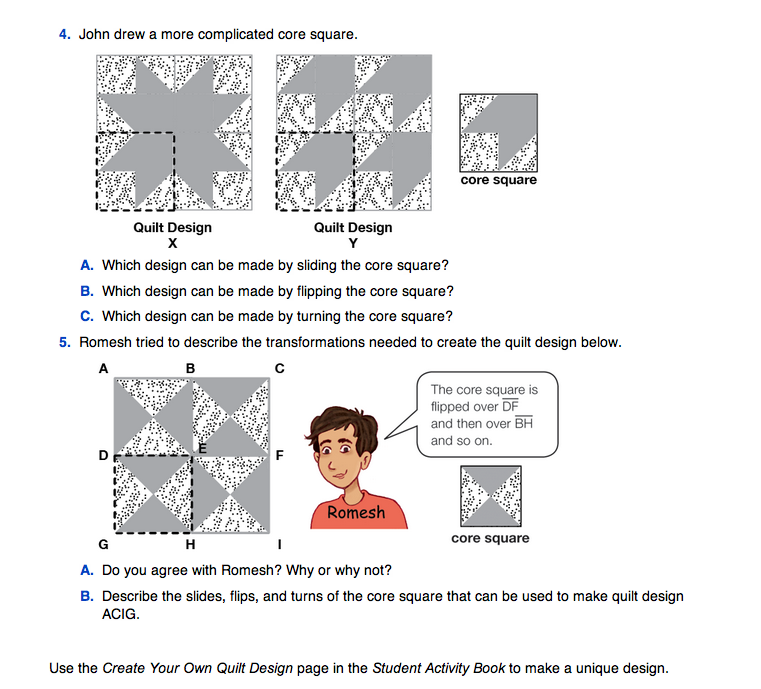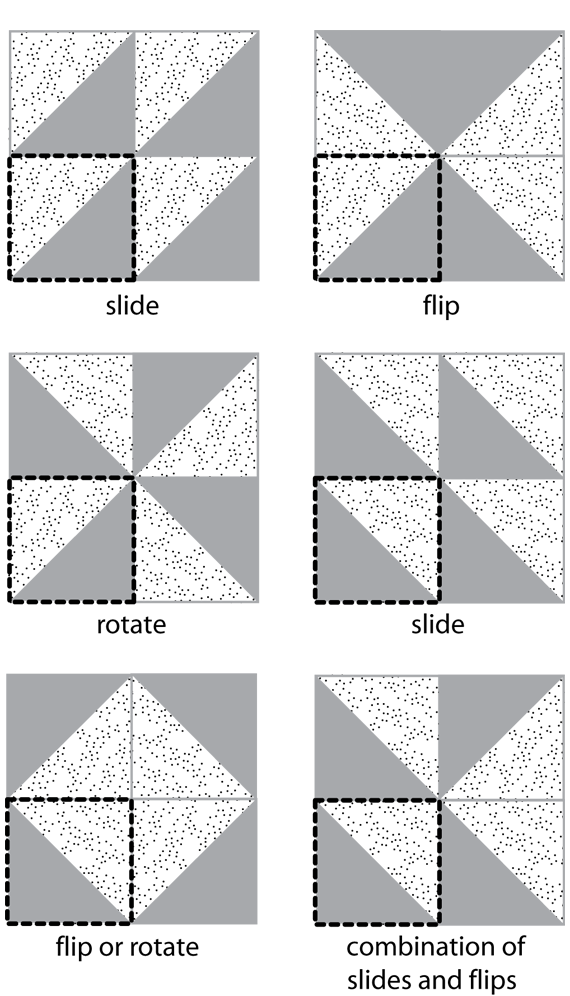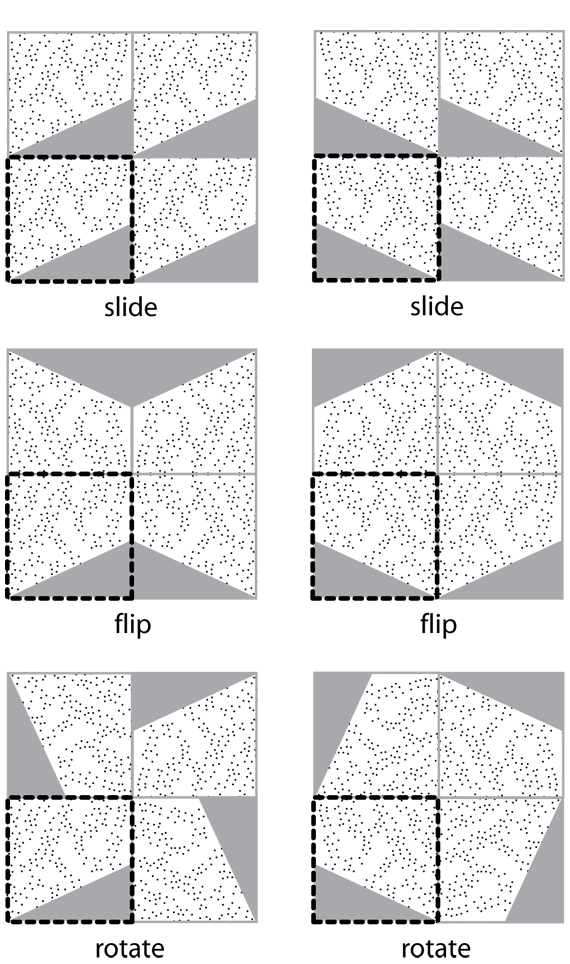Slides, Flips, and Turns
Est. Class Sessions: 2Developing the Lesson
Part 1. Making Quilt Designs
Introduce Slides, Flips, and Turns. Show students the images of quilt designs you gathered and the quilt designs found in the opening vignette on the Slides, Flips, and Turns pages in the Student Guide. Ask students to describe how each quilt design was created. Students should notice repeating a core shape creates a quilt design. In most examples the core shape is a square with a design on it, but not always. In Professor Peabody's collection of quilt designs, some are based on a core triangle rather than a core square. Discuss this first page of the lesson, stopping before Question 1.
Ask students to look at the core squares they cut from the Core Square with Large Green Triangles page in the Student Activity Book. Ask students which polygon was used to design the core square. Students should match the large green triangle to the core square design.
Using the quilt designs as inspiration, ask each student to make a quilt design using four of these squares. Each square is a copy of the core square. Students should tape their finished quilt design to a blank sheet of paper. Tell students to name their quilt design based on how the core square is moved in that quilt design (e.g., Sliding Shoe). Once finished, ask students to describe their design to a neighbor. Look for a variety of student quilt designs to share with the class. See Figure 1 for some example designs.
Ask students to display and describe their quilt designs for the class. Encourage students to look for similarities and differences.
Ask:
Ask students to use the same core square to make a different quilt design. Students should tape this new quilt design to a blank sheet of paper and name the design based on how the core square moves (e.g., Turning Triangle).
As you circulate, ask:
Assign and review Questions 1–3 in the Student Guide. Professor Peabody and his friends introduce the students to some words that might help them describe their quilt designs. Ask students to use one of the core squares with the large green triangle design to demonstrate the movements (flips, slides, and turns) as they are introduced.
Use Different Core Square Designs. Tell students they are going to make quilt designs with a different core square. Refer students to the core squares they cut from the Core Square with Orange Triangle page in the Student Activity Book. Ask students to identify the polygon that was used to make the core square design. Students should identify the orange right triangle.
Ask students to make two different quilt designs using this new core square. Each design should have four squares. The core square should move differently to create each design. For example, in one design the core square slides and in another the core square flips. See Figure 2 for examples of quilt designs that can be made with a core square with an orange triangle design.
Ask students to name their designs based on how the core square moves (e.g., Sliding Slice of Cheese). Then ask students to share their designs with a neighbor. Look for a variety of designs to share with the class. Ask students to describe the transformations in their quilt designs in their own words. Encourage them to also use the terms flips, slides, and turns.
Assign Questions 4 and 5 in the Student Guide. In these questions students identify the slides, flips, and turns using more complex core square designs. In Question 4, Quilt Design X is made by flipping or by turning the core square. If students find only one way to move the core square, ask them to find another.
Assign Create Your Own Quilt Design in the Student Activity Book for homework. Students use polygons to make a core square and then transform that core square to make a quilt design.













